ACME has completed Marsa Plaza, Oman’s largest new urban square in a generation.
Situated in the centre of Al Mouj Quarter, on the western edge of Muscat, Marsa Plaza creates a new urban space at the edge of the Marina. Opening out into the water and defined by steps and shading canopies, the square creates a number of informal spaces for water features and people-watching, seating terraces and an amphitheatre for performances. The ground plane of the square, the walls of the buildings and the shading canopies have all been designed as one to create a unified visual spatial identity and to blur the boundaries between the separate elements. The materiality and patterns have been developed from the local context, using local Omani stone and patterns developed from traditional geometries and vernacular types.
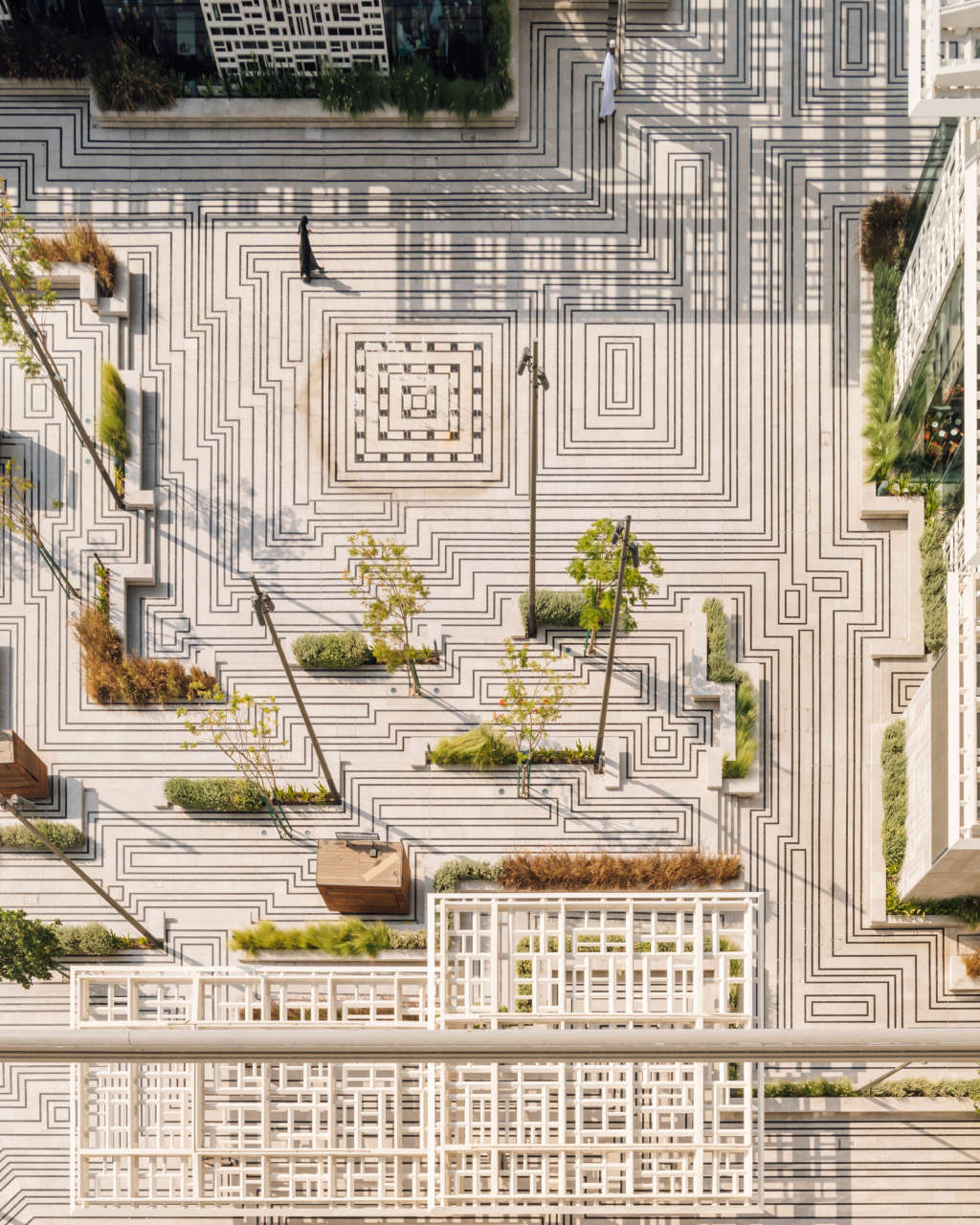
Muscat, Oman’s port capital, is tightly wedged between the Gulf of Oman and the Al Hajar mountain range at its back. Constrained in its urban development, the city continues to expand west along the shore, with several new city quarters under construction. Al Mouj is the largest of these new developments, defining a new urban quarter for Muscat. Marsa Plaza has been conceived as the heart of the Marina district, linking the main boulevard to the seafront promenade. It is intended to be not just an amenity for the local community, but a destination for the wider public of Muscat.
Protected from the intense sunlight by trees and overlapping canopies, the plaza invites people of all ages and creates a shaded environment for use during the heat of the day and in the evening. The screen patterns have been designed to maximise shading depending on screen angle and exposure, with variations in the grid to balance light and shade for each position.
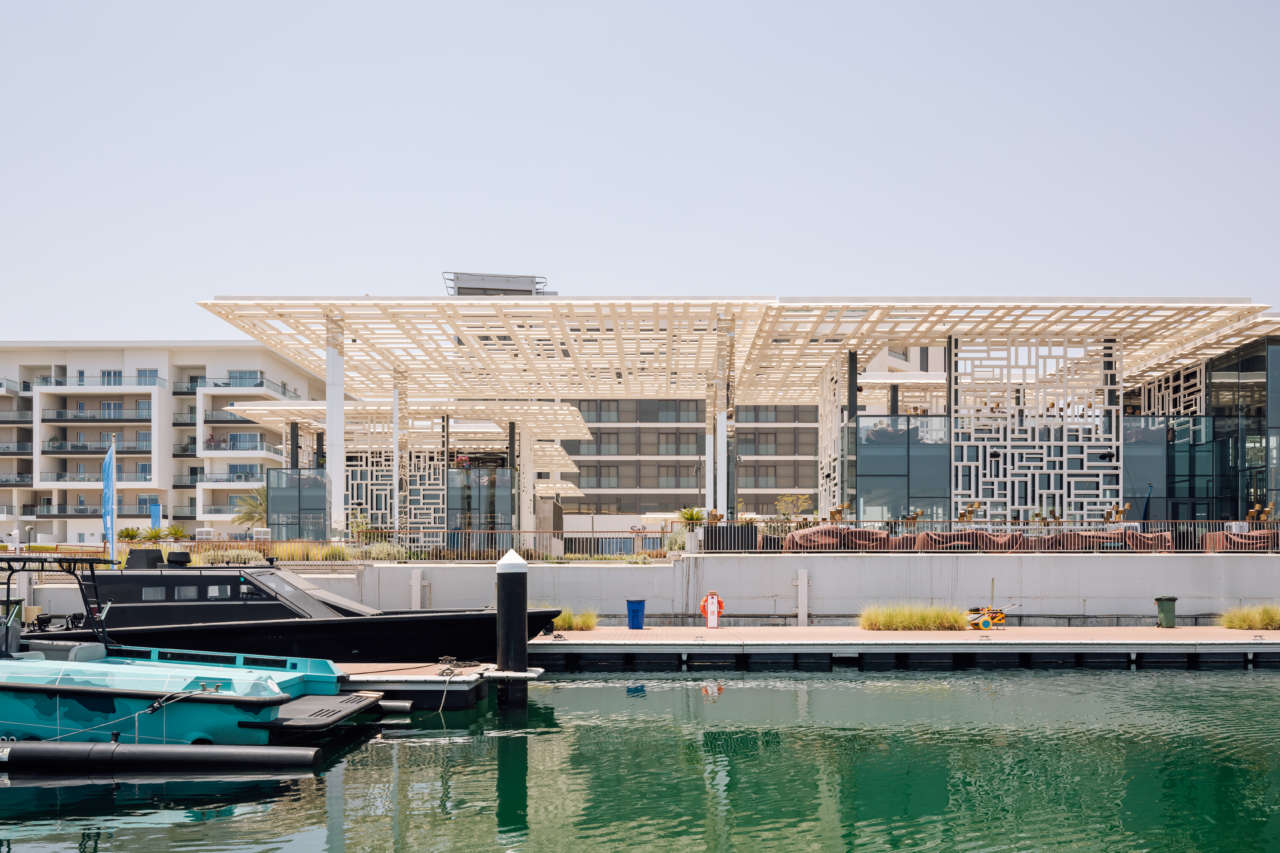
The levels of the square are stepped and ramped to bring the local city closer to the water’s edge and to form a natural amphitheatre around the central water feature. The geometry of the paving, canopies and mashrabiya wall plays with the tectonics and graphics of traditional Omani architecture. The project is constructed from solid local stone- Desert Rose marble quarried in Oman. Steps in the square and joints are outlined in black granite to create the floor pattern, and locally-produced lightweight aluminium canopies and screens cover the outside seating areas.
Two restaurants occupy the space behind some of the shading screens, and have been visually divided into three separate volumes: a double height glazed volume, a single storey volume with roof terrace and a stone-clad kitchens volume. The shifting masses break up the scale of the buildings and create a variety of outdoor seating areas as well as allowing the cool sea breeze to flow into the square.
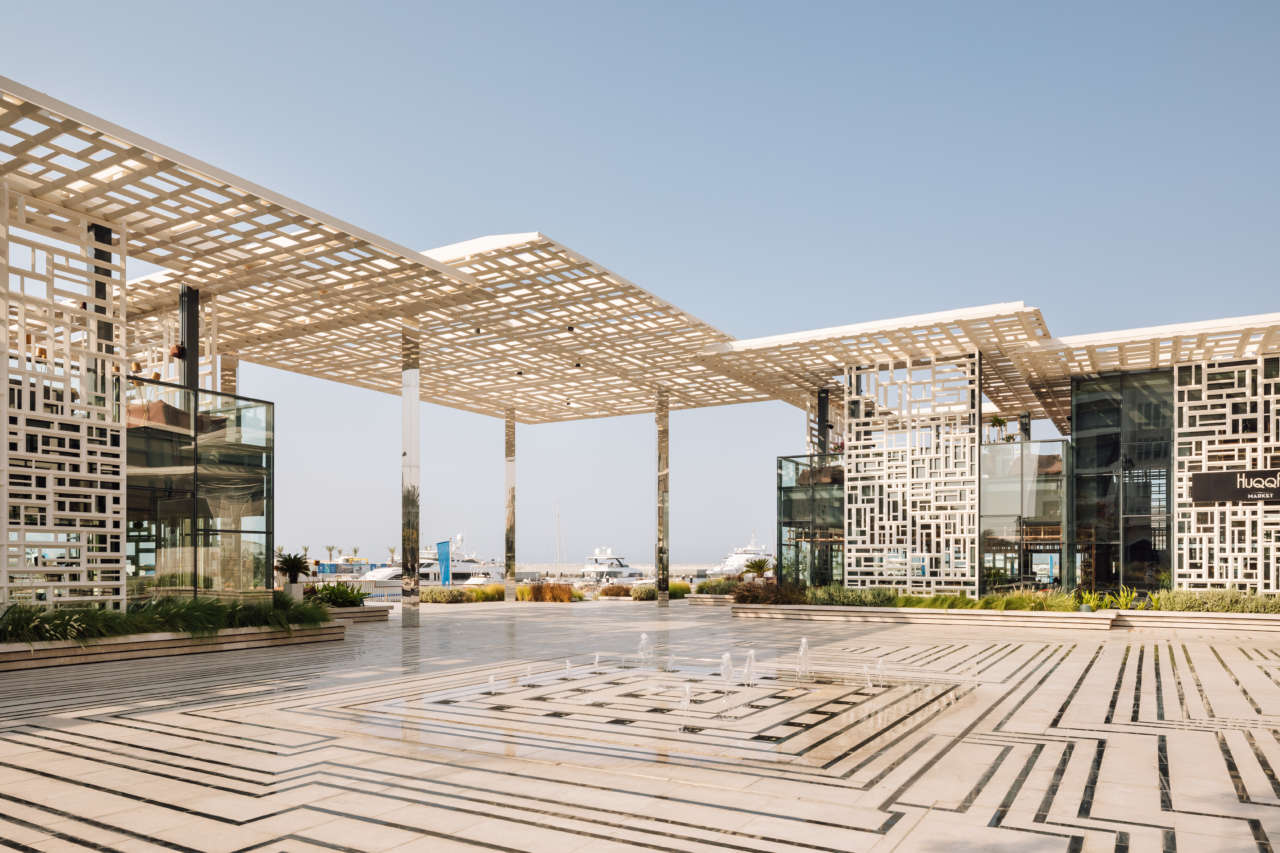
The glazed facades are protected from the sun by screens and canopy overhangs that allow for a pleasant microclimate inside and reduce the need for climate control. Roof canopies provide shading on all sides of the plaza. The canopies are lowest away from the sea, rising up towards the south-most corner where the largest one covers a performance area and frames views towards the water.
Friedrich Ludewig, Director at ACME said: “Marsa Plaza was envisioned as the new heart of the Al Mouj community, providing green, shade, spaces to sit, talk, eat, play and enjoy the breeze from the sea. Designed with local Omani materials and patterns and built with local contractors, the space is contemporary in form but deeply rooted in the local context. The spaces created by the structured floor, walls and canopies are simple to construct yet jointly create a complex and memorable space and identity for the community. Over the first summer, we have greatly enjoyed watching flaneurs pass by, restaurant guests eating out on the terraces, crowds of children play in the fountains, and to see performances on the stage facing the sea. We are delighted that Marsa Plaza has so quickly become the new heart of the community”.
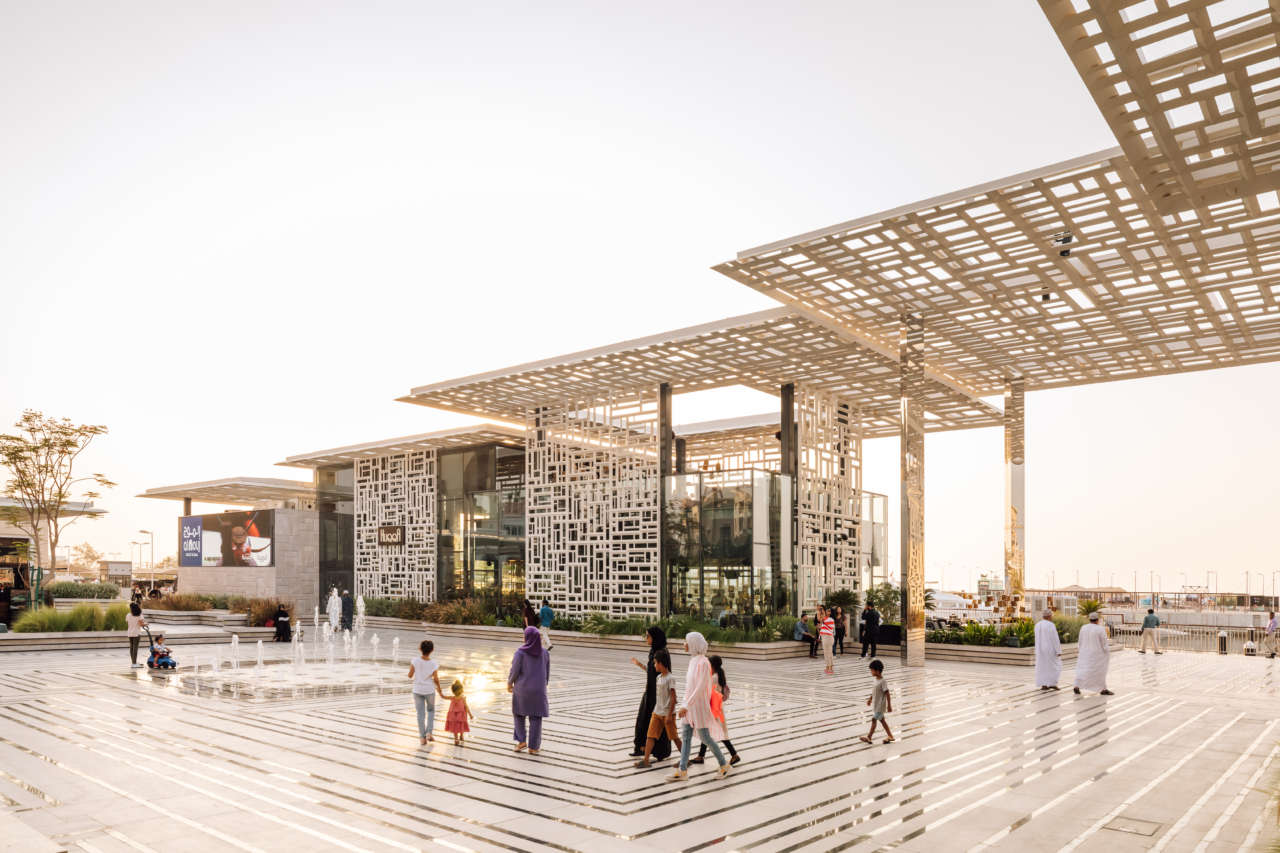
Nasser Al Sheibani, CEO of Al Mouj Muscat: “Marsa Plaza is a space that is both very traditional in its purpose and very contemporary in its vision, further reinforcing our commitment to offer locally-relevant design and outstanding lifestyle experiences. It is already an iconic landmark for Al Mouj Muscat, a space that brings people together for shared moments, while also opening a sense of connection to the heritage and landscape of Oman. In bringing life to Marsa Plaza, we have paid careful attention to the smallest of details, successfully fulfilling the diverse leisure and cultural needs at the heart of our diverse community”.
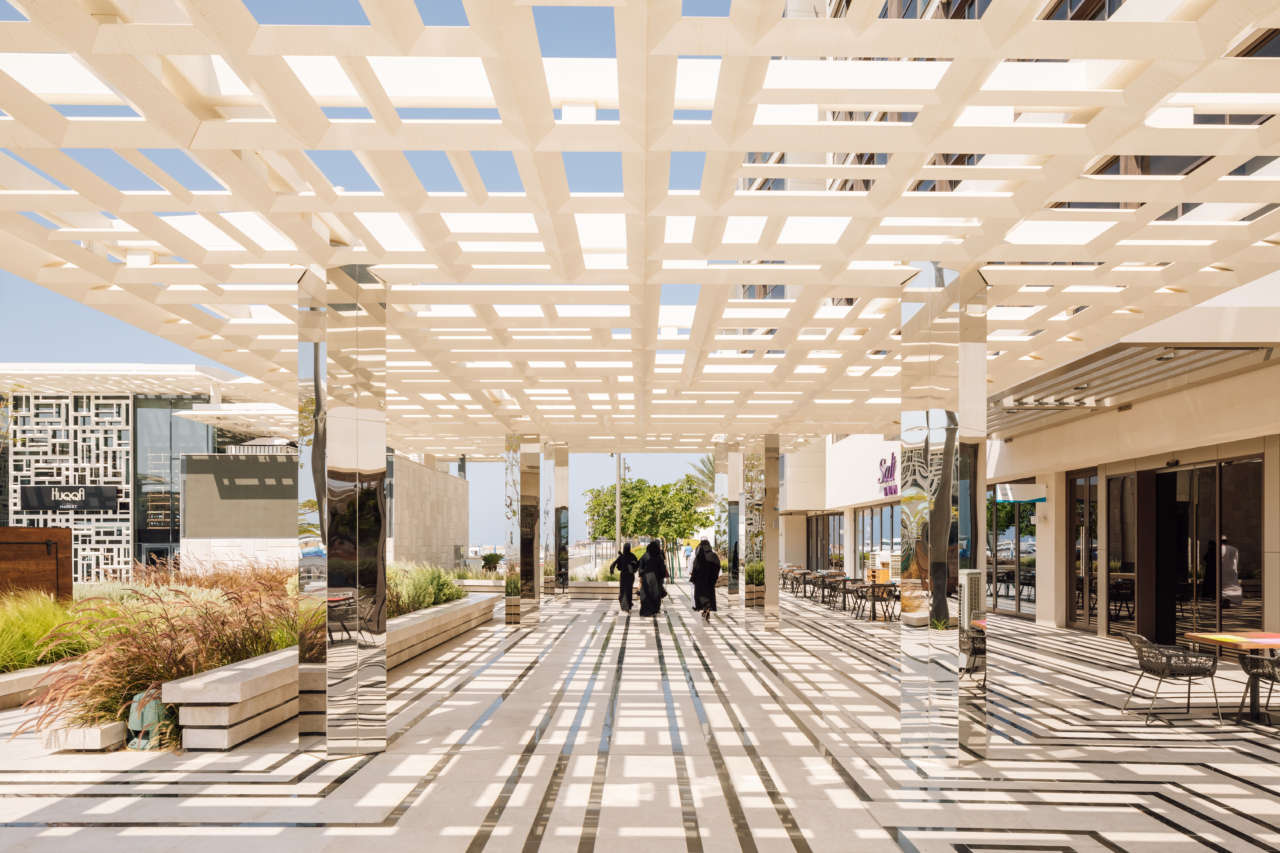
Project Sheets
Location: Muscat, Sultanate of Oman
Date: 2014-2019
Status: completed
Size: 5,500 mq (3,500 mq public square, 1,050 mq restaurants and cafés including terraaces)
Budget: 7.2 £ M
Architect: ACME (reiner Beelitz, João Brás, Molly hibberd, Duarte Lobo Antunes, Friedrich Ludewig, Borja Madrazo)
Consultants:
Landscape and Utilities: Parsons
MEP: T20 Engineers
Structure Civil engineering: Muamir Design & Engineering Consultancy
Contractor: Dubai Metal
Client: Al Mouj, Sultanate of Oman






